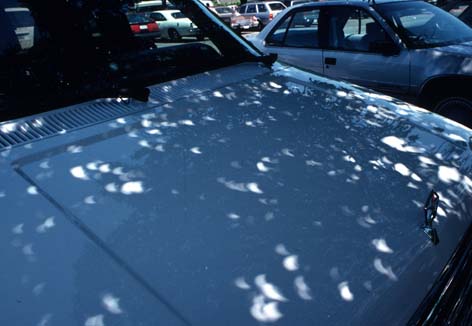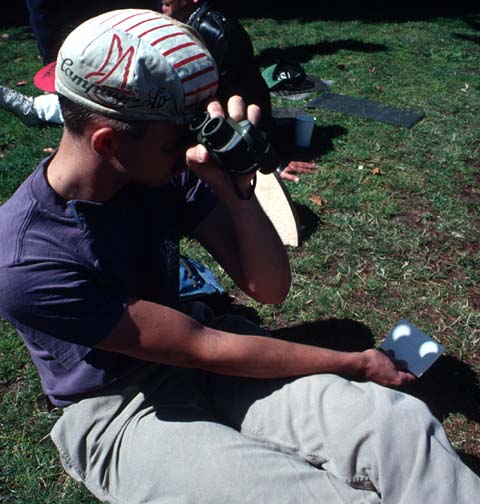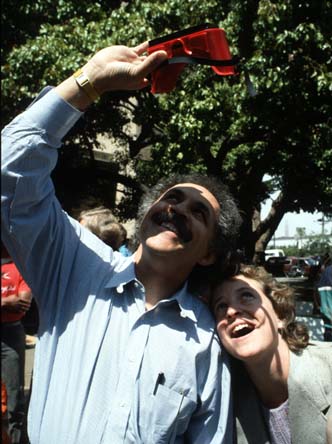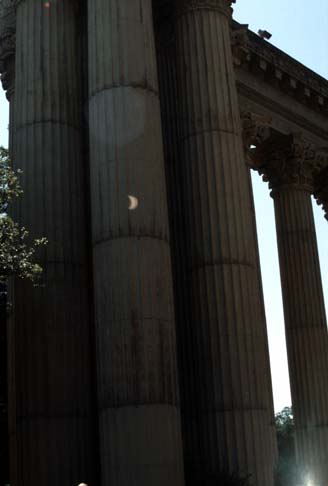
Pinholes between leaves project images of a partial eclipse.
A partial solar eclipse occurs when the moon blocks part of the sun's disk. It is dangerous to look at a partial solar eclipse directly, the part of the sun's disk that is not covered by the moon is so intense it will permanently damage the retina.
On the other hand, during a total solar eclipse when the entire disk of the sun is blocked by the moon, the sight of the solar corona is one of the most amazing sights you can ever see. It is safe to observe a totally eclipsed sun by looking at it directly directly with an unprotected eye.
Method 1 Tree leaves
The Pinholes formed between leaves of a tree will project images of the partial eclipse onto any uniform surface, a white car makes a great projection screen.

Method 2 Binoculars
You can also use a pair of binoculars to project images of the sun into the shadow of the binocular.
It takes a little practice to do this and a white screen definitely helps. Hold the binoculars, point the large end toward the sun, rotate the binoculars to make the shadow as small as possible. Watch for a bright image to appear. Adjust the focus and the distance from the binocular to the card to get the clearest image.

I often mount the binoculars on a tripod and poke
them through a cardboard shield to make a large shadowed region.
Take care when using a tripod setup, when people see binoculars they
may try to look through them, looking through binoculars at a
partially eclipsed sun will damage eyes almost instantly. stay
next to the binoculars at all times or use sticks and rope to
construct a barrier around the binoculars.
Method 3 Use a Filter
An easy way to view the eclipse is to look through a safe filter such as a #14 welders glass or special viewers made for eclipses of coated mylar.

Larry Antila and Rachel Meyer look through welder's goggles at a partial solar eclipse in front of the Exploratorium.
Method 4 Use a Pin Mirror
You can also reflect an image of the partial eclipse onto a shaded wall using a small "pin mirror." Cover a mirror with heavy paper stock. Cut a small hole, perhaps 0.5 cm in diameter, into the paper stock. Rotate the mirror to place the pinhole image onto the shaded wall.

Method 5 Use a Pinhole
Cut a small hole in a piece of cardboard, perhaps 1 cm on a side. Cover that hole with thick aluminum foil. Poke a clean circular hole in the aluminum foil. (To make a clean hole hold a piece of cardboard behind the aluminum foil, use a pushpin and twirl it as you push it through the aluminum and into the cardboard to make the hole.)
Hold the cardboard so that an image of the partial eclipse made by the pinhole falls on a white piece of cardboard.
|
Scientific Explorations with Paul Doherty |
|
20 January 2001 |